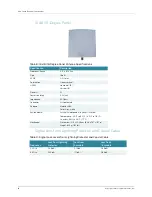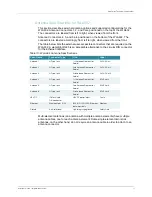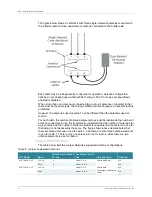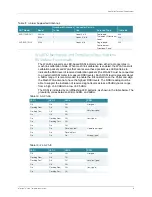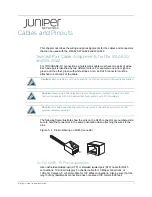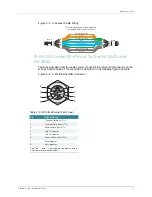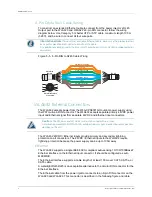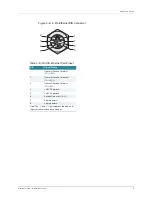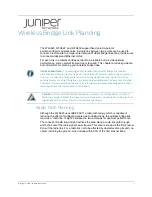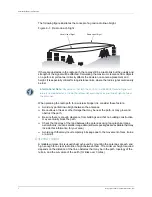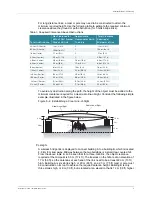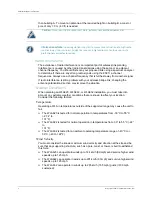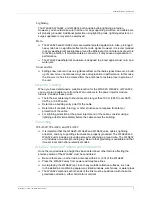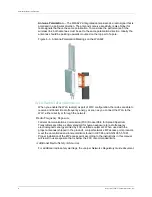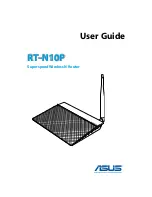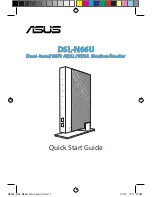
Copyright © 2012, Juniper Networks, Inc.
1
Wireless Bridge Link Planning
The WLA620, WLA622, and WLA632 support fixed point-to-point or
point-to-multipoint wireless links. A single link between two points can be used to
connect a remote site to a larger core network. Multiple bridge links can provide a way
to connect widespread Ethernet LANs.
For each link in a wireless bridge network to be reliable and provide optimum
performance, some careful site planning is required. This chapter provides guidance
and information for planning your wireless bridge links.
Radio Path Planning
Although the WLA620 uses IEEE 802.11a radio technology, which is capable of
reducing the effect of multipath signals due to obstructions, the wireless bridge link
requires a “radio line-of-sight” between the two antennas for optimum performance.
The concept of radio line-of-sight involves the area along a radio link path through
which the bulk of the radio signal power travels. This area is known as the first Fresnel
Zone of the radio link. For a radio link not to be affected by obstacles along its path, no
object, including the ground, must intrude within 60% of the first Fresnel Zone.
Informational Note:
The planning and installation of a wireless bridge link requires
professional personnel that are trained in the installation of radio transmitting equipment.
The user is responsible for compliance with local regulations concerning items such as
antenna power, use of lightning arrestors, grounding, and radio mast or tower construction.
Therefore, it is recommended to consult a professional contractor knowledgeable in local
radio regulations prior to equipment installation.
Caution:
System Administrators and anyone involved in the installation of the WLAN
System are responsible for the proper setup and operation in accordance to all rules and
regulations of the country in which the equipment operates




